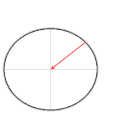Файл:Forces oblate spheroid2.gif — Википедия
Forces_oblate_spheroid2.gif (256 × 256 пкс, размер файла: 6 КБ, MIME-тип: image/gif, закольцованный, 3 фрейма, 9,0 с)
История файла
Нажмите на дату/время, чтобы посмотреть файл, который был загружен в тот момент.
| Дата/время | Миниатюра | Размеры | Участник | Примечание | |
|---|---|---|---|---|---|
| текущий | 09:30, 16 января 2006 |  | 256 × 256 (6 КБ) | Cleontuni | '''Description:'''<BR> This sequence of three images shows the forces that are at play on a rotating planet such as Earth. Because of its rotation, the Earth is not spherical in shape, it is an oblate spheriod. The force of gravity is directed towards the |
Использование файла
Следующая страница использует этот файл:
Глобальное использование файла
Данный файл используется в следующих вики:
- Использование в en.wikipedia.org
- Использование в es.wikipedia.org
- Использование в it.wikipedia.org
- Использование в nl.wikipedia.org
- Использование в pt.wikipedia.org
- Использование в sk.wikipedia.org
- Использование в zh.wikipedia.org


 French
French Deutsch
Deutsch
